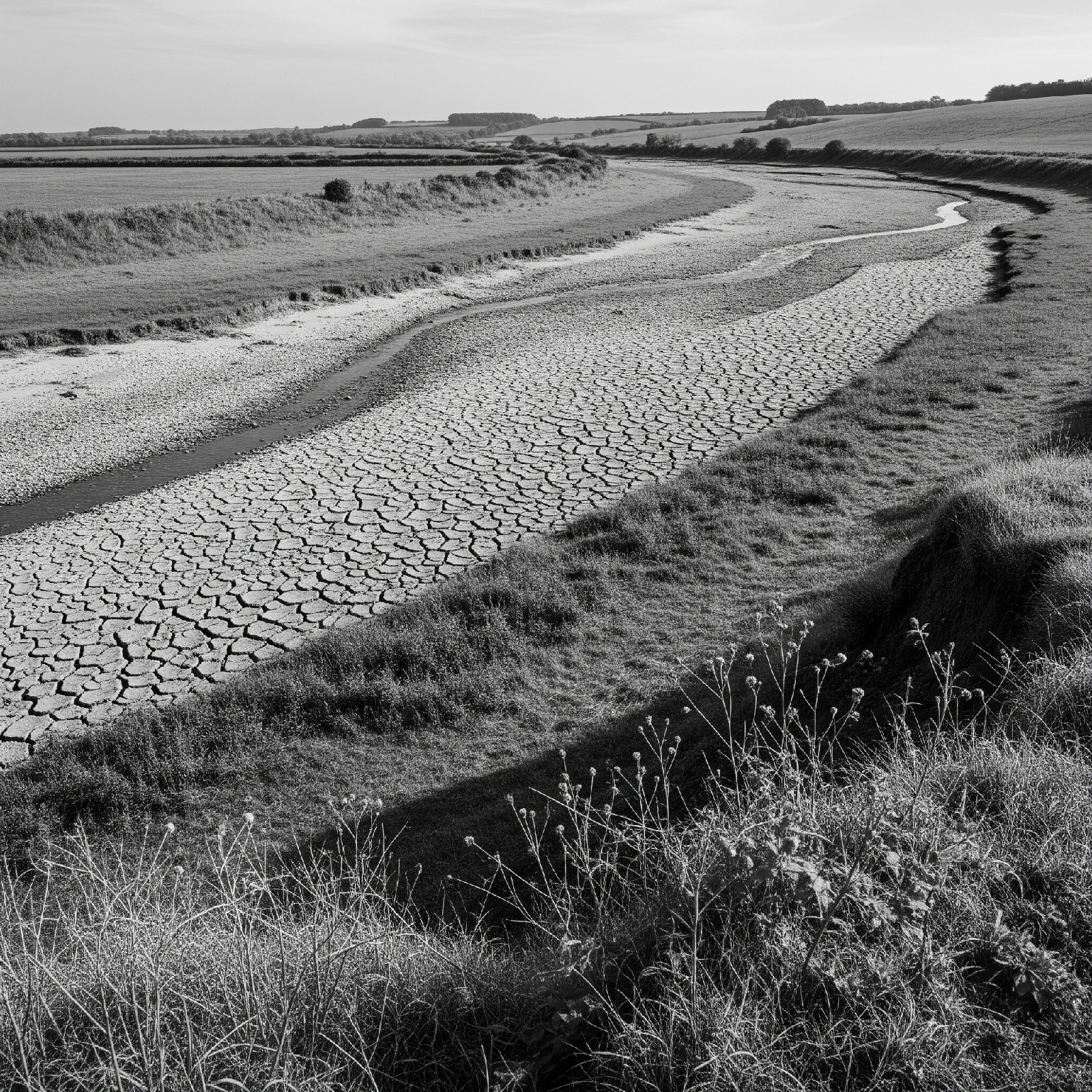As meteorological summer officially begins, the UK finds itself in the grip of drought conditions, following a spring that has shattered records for dryness and sunshine. From parched fields to dwindling reservoir levels, the impact is being felt across the country, prompting urgent action from water companies and a plea for public cooperation.
A Spring Like No Other: Record Dryness and Unprecedented Sunshine
This spring has been nothing short of exceptional, but not in a way that brings comfort. The Met Office has confirmed that Spring 2025 is officially the UK's sunniest on record, surpassing the previous record set during the 2020 lockdown. While delightful for those seeking sunshine, this relentless brightness has been coupled with alarmingly low rainfall.
Many regions have experienced significantly below-average rainfall, with March being the driest across England since 1961, and April receiving just half its typical total. The North West of England, in particular, has been hit hardest, experiencing its driest spring in nearly a century. Reservoir levels, which typically replenish over winter and spring, are well below what they should be at this time of year, with major reservoirs like Haweswater and Thirlmere in the North West at just 47.5% capacity. This "meteorological drought" has rapidly translated into "agricultural drought" as soil moisture deficits rise, threatening crops and raising concerns about food prices.
Experts from the University of Reading highlight that while droughts are often associated with summer heat, they can occur at any time and persist for extended periods. The increasing frequency and intensity of such events are a stark reminder of the impacts of a warming planet, as a warmer atmosphere "thirsts" for more water.
Water Companies on High Alert: What's Being Done
In response to the escalating crisis, water companies and the Environment Agency are taking proactive steps. The National Drought Group has convened to discuss immediate and long-term strategies. The government is accelerating plans for new reservoirs, with two in Cambridgeshire and Lincolnshire already announced, as part of a wider push to secure future water supplies.
Water companies are reviewing and enacting their drought plans, which include measures like:
Public Awareness Campaigns: Encouraging customers to use water wisely.
Leakage Reduction: Intensifying efforts to find and fix leaks across their networks. This is a critical area of focus, with the Environment Agency urging companies to do more to cut leakage.
Drought Permits and Orders: Preparing to apply for measures such as Temporary Usage Bans (TUBs), more commonly known as hosepipe bans, if conditions worsen. These bans, which restrict the use of hosepipes for non-essential activities like watering gardens, filling paddling pools, or washing cars, were imposed by five water companies affecting 19 million customers during the 2022 drought.
Strategic Water Transfers: Exploring the possibility of moving water between regions to support areas under severe stress.
Long-Term Planning: Finalising strategic water resources management plans (WRMPs) that outline how they will meet future demand over the next 25 years, incorporating both supply-side measures (like new infrastructure) and demand-side measures (like promoting water efficiency).
The water sector is currently undergoing significant reform, with substantial private sector investment earmarked for improving infrastructure and resilience to climate change.
How We Can All Help: Reducing Our Water Footprint
While large-scale infrastructure projects are vital, individual actions collectively make a massive difference. Every drop saved contributes to preserving our precious water resources. Here's how you can help reduce water shortages:
In the Home:
Shorter Showers: Aim for a 5-minute shower instead of a bath, which uses about half the water. Consider installing a low-flow shower head.
Turn Off Taps: Don't let the tap run while brushing teeth, shaving, or washing hands. This alone can save litres per minute.
Full Loads Only: Wait until you have a full load before using your washing machine or dishwasher, and use the eco-mode if available.
Check for Leaks: Regularly inspect taps, pipes, and toilets for leaks. Even a small drip can waste a surprising amount of water over time.
Water-Saving Devices: Install water-saving devices in your toilet cistern (especially older models) to reduce water per flush.
Reuse Greywater: Collect relatively clean used water (e.g., from washing vegetables) to water plants.
In the Garden:
Embrace the Brown Lawn: Lawns are resilient and will bounce back. Avoid watering them during dry spells.
Water Wisely: If you must water plants, do so in the early morning or late evening to minimise evaporation. Use a watering can instead of a hosepipe, as hosepipes can use hundreds of litres per hour.
Install a Water Butt: Collect rainwater from your roof in a water butt for free, natural water for your garden.
Mulch Your Plants: Applying mulch around plants helps retain soil moisture, reducing the need for frequent watering.
Choose Drought-Resistant Plants: Opt for plants that naturally require less water.
The current drought in the UK is a serious reminder that water is a finite and increasingly scarce resource. By understanding the challenges and actively participating in water-saving efforts, we can all play a crucial role in mitigating the impact of these dry conditions and ensuring a more resilient water future for the UK.

